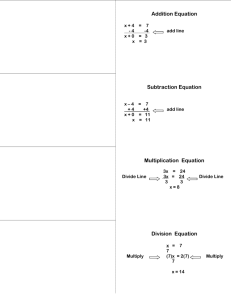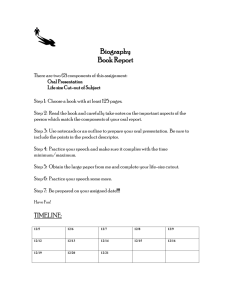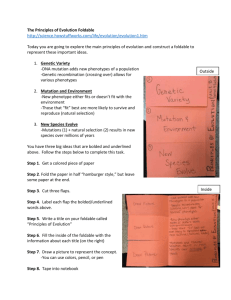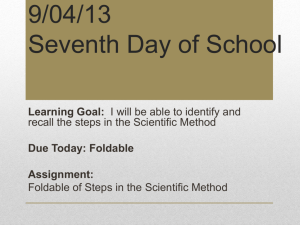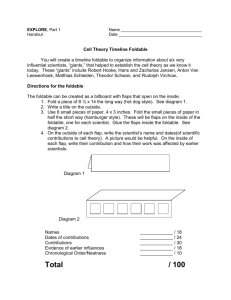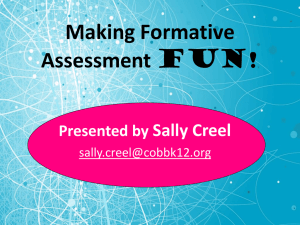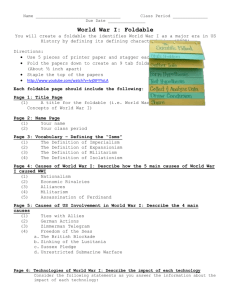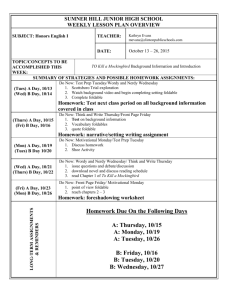Scientific Method Notes
advertisement
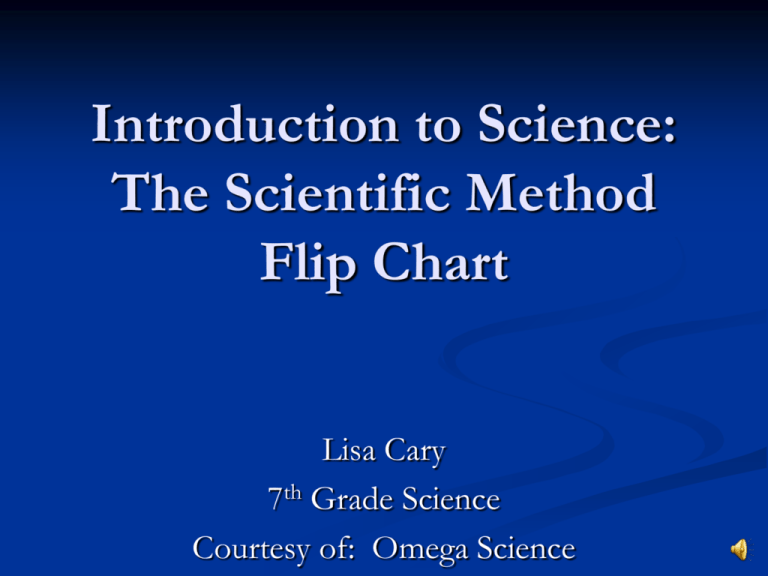
Introduction to Science: The Scientific Method Flip Chart Lisa Cary 7th Grade Science Courtesy of: Omega Science What is Science?-Do not write in foldable The knowledge obtained by observing natural events and conditions in order to discover facts and formulate laws or principles that can be verified or tested. What is the Scientific Method?Do not write in foldable Step-by-step way in which scientists answer questions. 1. State the Problem. 2. Research 3. Hypothesis. 4. Experiment 5. Record and Analyze Data 6. State Conclusions. 8. Repeat Experiment for Accuracy and communicate Results. State the Problem-left side of foldable The problem identifies what you want to find out. Be specific In the form of a question: Ex. “How does ___ affect __? “What is the effect of ___ on __?” State the Problem/QuestionsRight side of foldable How many paper clips can I fit in a full cup of water? Research-Left side of foldable Write down what you already know Use books, articles, experts, and Internet. Reliable Sources: -.edu -.gov -.org -NOT wikipedia If you find an answer to your question, you don’t need to move on. Research-Right side of foldable -Paper Clips all the same size -Brand name -Water Displacement -Water properties -Books? -Internet? Hypothesis-Left side of foldable Hypothesis: An explanation based upon prior research or observations AND can be tested. Must relate to your problem. Use your research to best answer your question. Hypothesis-Left side of foldable *But you must be able to test it! *Not everyone’s hypothesis is the same! Must be a statement in the form of “If…Then” Hypothesis-Right side of foldable If I put more than ____ paper clips in a full cup of water, Then the water will overflow. Experiment-Left side of Foldable Test to support or refute your hypothesis. Variables: Something that changes. -Independent Variable-Scientist changes. -Dependent Variable-What is being measured, “The result” Experiment-Left side of Foldable Must have multiple trials (do experiment multiple times)- this makes your work valid and accurate. Use a Controlled Experiment only 1 independent variable at a time being tested using a : Experiment-Left Side of Foldable Control Group Scientist changes nothing. Experimental Group Scientist changes something. Constants-What is kept the same in experimental and control group Experiment-Right Side of Foldable 1. 2. 3. Fill plastic cup almost to the top with water. Go to your seat. Fill beaker half full of water. Go to your seat. Fill plastic cup to the brim with water. Experiment-Right Side of Foldable 4. Add 1 paper clip at a time to plastic cup. 5. Continue adding paper clips until water spills over. 6. Clean up your area. 7. Record your results. Record and Analyze Data-Left Side Make Observations (5 senses) Anything that you see, smell, touch, taste, or hear. Ex. Fizz, color change, bitter.) Measurable data. (Ex. 5 cm, 10 m, ect.) *Record- be consistent: create tables and charts. *Create- Graph from collected data (line, bar) Record and Analyze Data-Right Side I think ______ paper clips. ______ paper clips for spill. State Conclusions-Left side Restate purpose of experiment. State if your hypothesis was correct or incorrect. Consider improvements for your experiment. State Conclusions-Right side The purpose of the experiment was to find out how many paper clips would fit in a full cup of water. Originally, I believed _____ paper clips would fit. My hypothesis was _______ because over _____ paper clips fit in the cup without the water spilling. I could improve my experiment by _____ Repeat Experiment for Accuracy Experiments done the same way can have different results. To be valid and accurate you must repeat experiment multiple times.
